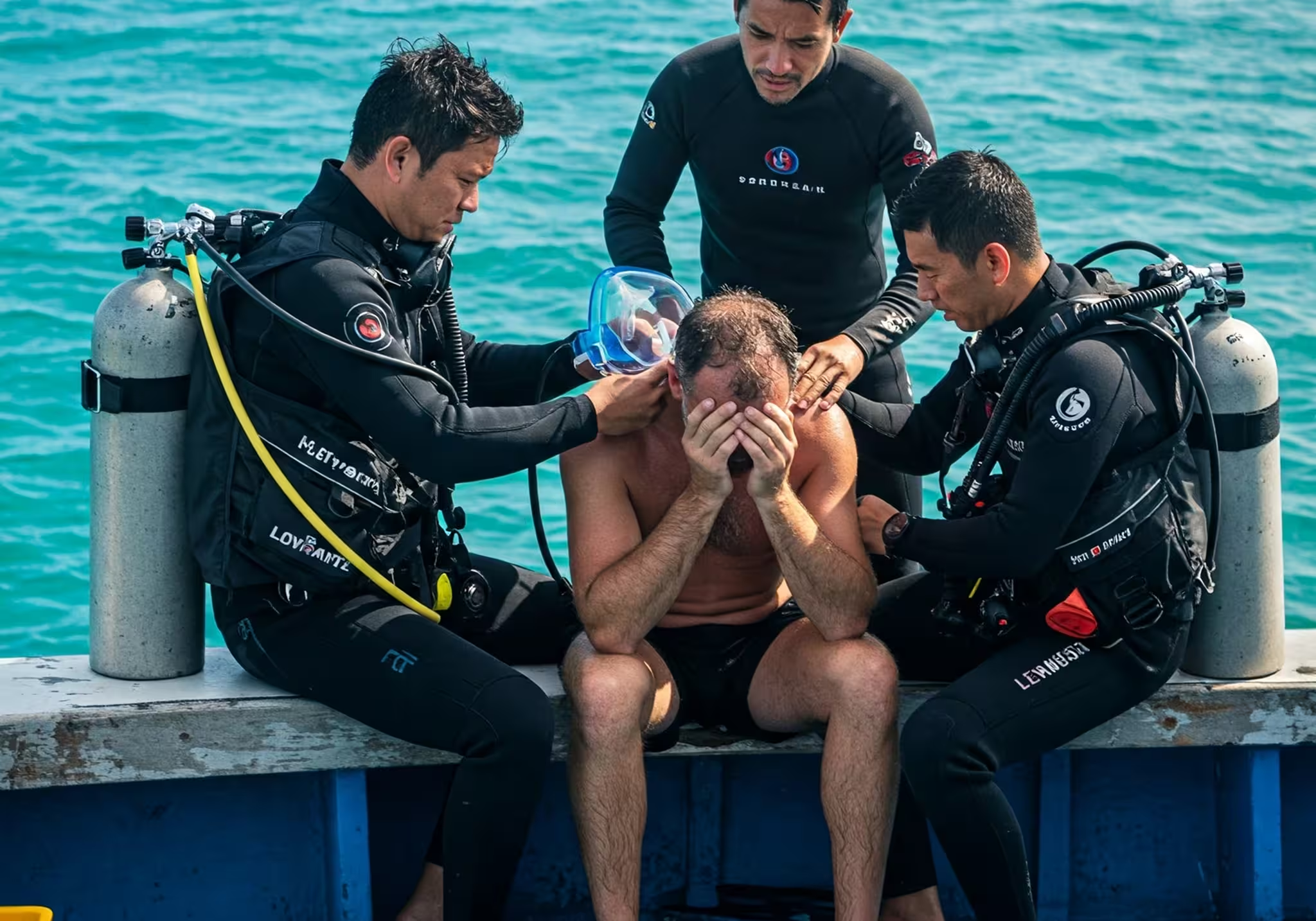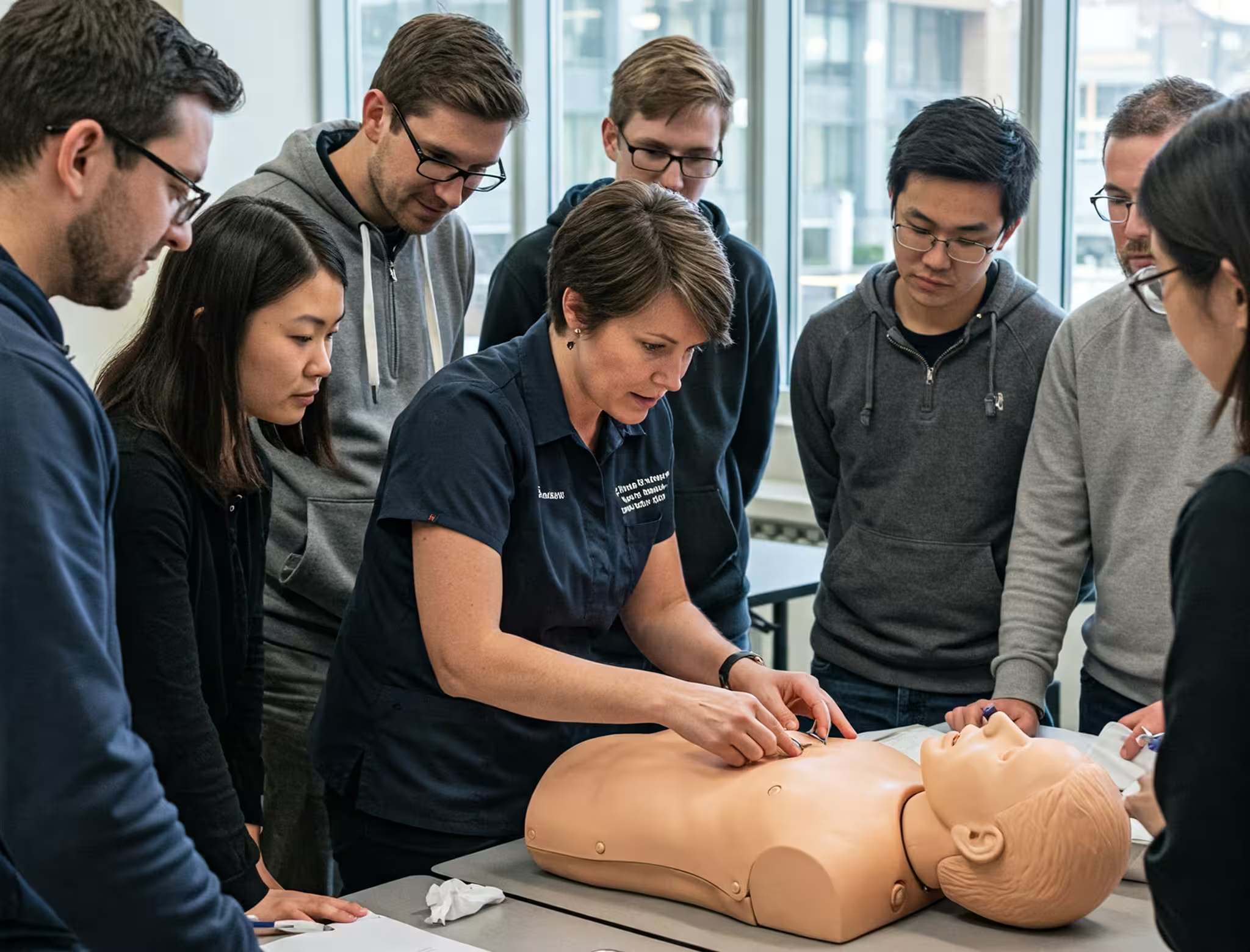1. Introduction: The Importance of Being Prepared
Dive emergency preparedness is a critical aspect of diving, serving both as a means of preventing accidents and as a crucial defense tool should an incident occur. It is important to understand that due to the inherent risks of diving, accidents can happen. However, a great deal can be done to mitigate these risks and limit negative outcomes. These principles of preparedness are applicable to dive centers and resorts, dive boats, individual instructors, and dive supervisors.
2. Key Components of Dive Emergency Preparedness
2.1. Emergency Plans (EAPs)
While not always an industry standard, having an overall emergency plan is extremely beneficial. This plan should detail procedures, equipment, training needed for the business, employees, and contractors involved in dive operations. Key elements include:
- Rescue and first-aid training. Ensure all dive staff are certified in basic life support (BLS), CPR, and first aid, specifically addressing diving-related injuries, with regular refresher courses.
- Standards adherence and required paperwork.
- Dive briefing content. An incomplete dive briefing can be a causative factor in accidents.
- Emergency procedures and responder contact information. Maintain an up-to-date list of essential emergency contacts.
- Communications ability. Establish clear methods for communication between divers, boats, shore personnel, and emergency services. Regularly practice using communication devices.
The plan should be formalized, kept updated, and reviewed with all staff and contractors, with records of such training maintained. EAPs should be customized for different aspects of dive operations, including the dive center itself, dive sites (considering conditions and remoteness), and vehicles used for transport. EAPs should include step-by-step procedures for various potential emergencies such as lost divers, medical emergencies (on-site and in-water), equipment malfunctions, marine life encounters, boat-related emergencies, and weather-related emergencies. The EAP should designate a clear chain of command. The location of all emergency equipment should be clearly indicated and easily accessible. EAPs should be reviewed and updated at least annually. Regular walk-throughs and realistic drills of emergency action plans (at least once a year) are essential to ensure effective execution by staff.
2.2. Emergency Equipment
All necessary emergency equipment should be on hand, familiar to the staff, and in good working order.
- Emergency oxygen should be considered standard, with adequate fills and proper delivery systems. All staff who may need to administer oxygen should be properly trained.
- AEDs (Automated External Defibrillators), while not always standard, can be very helpful. Consider having one on-site and training staff in its use.
- A comprehensive first-aid kit appropriate for diving-related injuries should be maintained, regularly inspected, and easily accessible.
- mergency communication devices such as VHF radios, satellite phones or PLBs (for remote locations), and whistles or other signaling devices for divers are important.
- Have a reliable method for recalling divers to the boat (e.g., air horn, underwater signaling devices).
- Depending on diving activities and proximity to medical facilities, consider having spinal immobilization equipment.
- Emergency equipment that is inoperable can be a severe detriment in litigation.

2.3. Insurance
Everyone involved in dive instruction and supervision should be properly insured (dive centers, boats, instructors, divemasters).
- Dive professionals should have associated dive centers and boats named as additional insureds on professional liability policies. For PADI members with PADI-endorsed insurance, this is automatic.
- Ensure any dive boats used have current insurance. Lack of insurance can create serious disadvantages in case of an accident and litigation.
Many dive certification organizations have established partnerships with insurance providers, potentially offering benefits to their affiliated professionals and dive centers. For example, PADI has an established partnership with Divers Alert Network (DAN), while SSI and SDI/TDI have strong partnerships with DiveAssure.
Other reputable insurance providers to explore include XINSURANCE and DiveAssist.
It's recommended to check with your specific certification organization for details on their preferred insurance partners and any available member benefits in your region.
2.4. Third-party Partners and Service Providers
When involving third parties (e.g., boat owners, pool operators), it is wise to assess their qualifications, supervision, emergency equipment, egress procedures, and insurance. Inattention or lack of proper equipment, staffing, or training by third parties has been a cause of dive fatality litigation losses involving instructors and dive centers.
2.5. Proper Paperwork and Documentation
Meticulous documentation is a critically important aspect of dive safety and responsible operations.
- Properly completed medical questionnaires provide crucial information about a diver's health.
- Comprehensive waivers and releases provide essential legal protection.
- Verifying diver certifications ensures participation in appropriate activities.
- Readily available emergency contact information is crucial.
- Maintaining organized and accurate records is essential for efficiency, compliance, and in emergencies.
- Tools like Diversdesk can help manage paperwork digitally, providing quick access to vital information like medical declarations and emergency contacts. Read more about this in Chapter 3
2.6. Training and Drills
Regular training and realistic emergency drills are paramount to ensure plans and equipment can be used effectively.
- Conduct regular drills simulating various emergency scenarios to identify weaknesses and build staff confidence.
- Ensure all staff are familiar with the location, operation, and maintenance of all emergency equipment.
- Regularly practice communication protocols.
2.7. Post-Incident Procedures
Have procedures in place for managing the aftermath of an emergency.
- Establish a clear process for documenting all incidents.
- Provide appropriate support for affected individuals.
- Conduct a thorough review of the incident and the effectiveness of the response to identify areas for improvement.
- Follow established protocols for reporting incidents to relevant authorities.
3. Making Paperwork Painless: Leveraging Technology with Diversdesk
In today's digital age, managing the necessary paperwork doesn't have to be a cumbersome task. That's why Diversdesk offer a streamlined approach to handling crucial documentation for enhanced dive safety. By digitizing waivers and registration forms, Diversdesk ensures that vital information, such as medical declarations and emergency contacts, is readily accessible. The platform automatically converts these completed forms into PDF documents, securely storing them within each diver's profile. This not only simplifies incident reporting and certification verification but also contributes to maintaining up-to-date records and significantly reducing administrative burdens. Ultimately, this efficient management of paperwork enhances both safety protocols and legal protection for your dive operation.
4. Conclusion: A Commitment to Safety
By focusing on these key areas, dive operations and professionals can significantly enhance safety, limit the negative consequences of accidents, and strengthen their position in potential litigation by demonstrating a commitment to preparedness.
